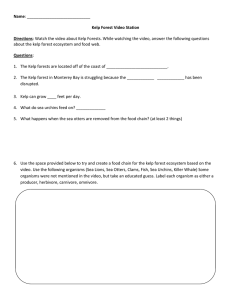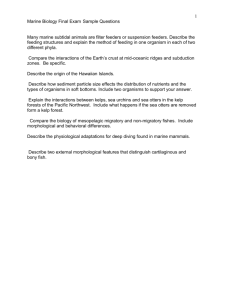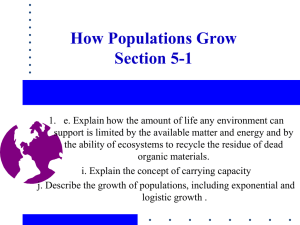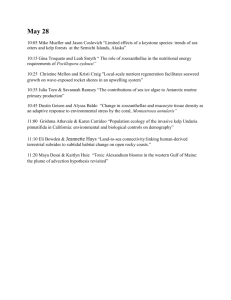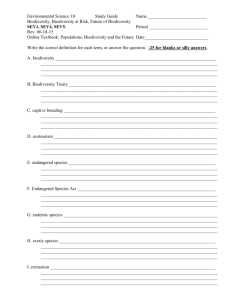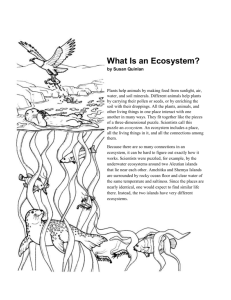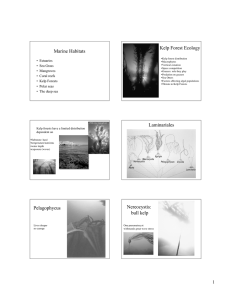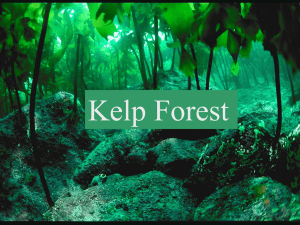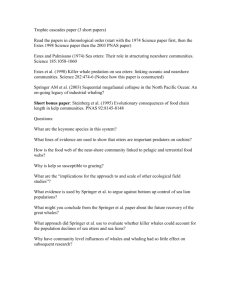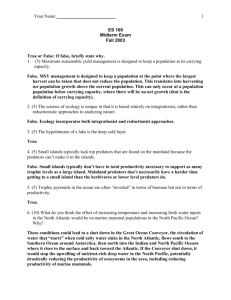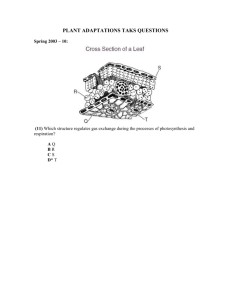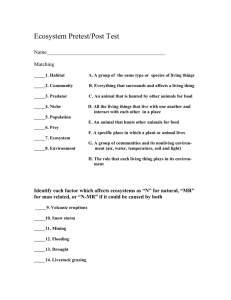Background Essay on Kelp Forests
advertisement
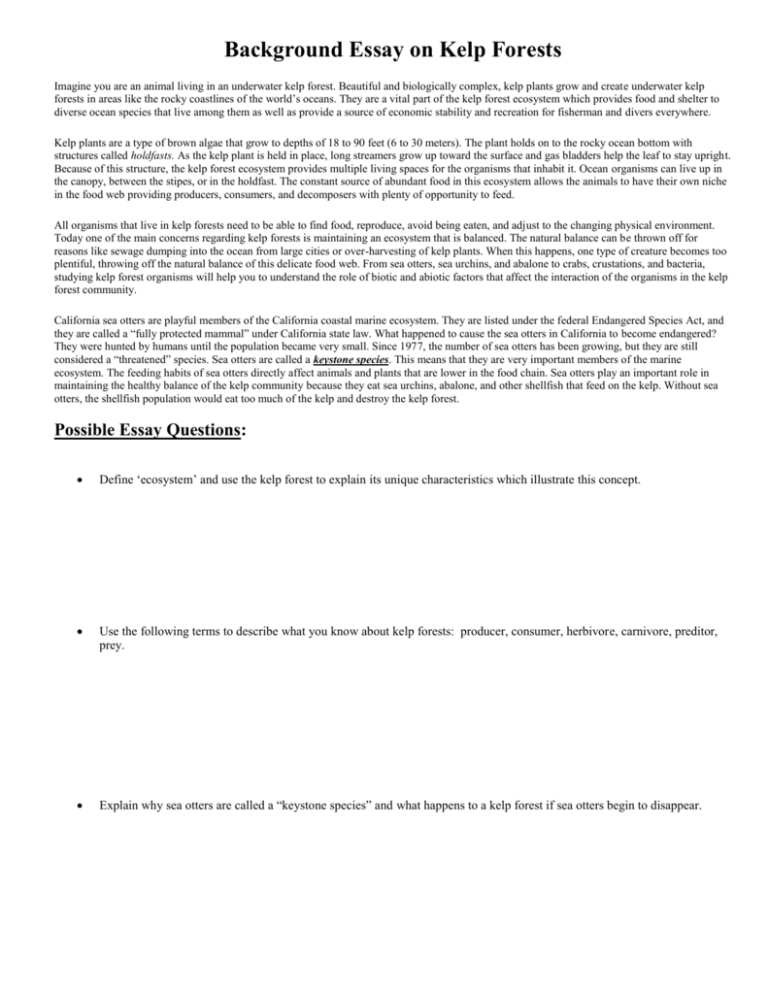
Background Essay on Kelp Forests Imagine you are an animal living in an underwater kelp forest. Beautiful and biologically complex, kelp plants grow and create underwater kelp forests in areas like the rocky coastlines of the world’s oceans. They are a vital part of the kelp forest ecosystem which provides food and shelter to diverse ocean species that live among them as well as provide a source of economic stability and recreation for fisherman and divers everywhere. Kelp plants are a type of brown algae that grow to depths of 18 to 90 feet (6 to 30 meters). The plant holds on to the rocky ocean bottom with structures called holdfasts. As the kelp plant is held in place, long streamers grow up toward the surface and gas bladders help the leaf to stay upright. Because of this structure, the kelp forest ecosystem provides multiple living spaces for the organisms that inhabit it. Ocean organisms can live up in the canopy, between the stipes, or in the holdfast. The constant source of abundant food in this ecosystem allows the animals to have their own niche in the food web providing producers, consumers, and decomposers with plenty of opportunity to feed. All organisms that live in kelp forests need to be able to find food, reproduce, avoid being eaten, and adjust to the changing physical environment. Today one of the main concerns regarding kelp forests is maintaining an ecosystem that is balanced. The natural balance can be thrown off for reasons like sewage dumping into the ocean from large cities or over-harvesting of kelp plants. When this happens, one type of creature becomes too plentiful, throwing off the natural balance of this delicate food web. From sea otters, sea urchins, and abalone to crabs, crustations, and bacteria, studying kelp forest organisms will help you to understand the role of biotic and abiotic factors that affect the interaction of the organisms in the kelp forest community. California sea otters are playful members of the California coastal marine ecosystem. They are listed under the federal Endangered Species Act, and they are called a “fully protected mammal” under California state law. What happened to cause the sea otters in California to become endangered? They were hunted by humans until the population became very small. Since 1977, the number of sea otters has been growing, but they are still considered a “threatened” species. Sea otters are called a keystone species. This means that they are very important members of the marine ecosystem. The feeding habits of sea otters directly affect animals and plants that are lower in the food chain. Sea otters play an important role in maintaining the healthy balance of the kelp community because they eat sea urchins, abalone, and other shellfish that feed on the kelp. Without sea otters, the shellfish population would eat too much of the kelp and destroy the kelp forest. Possible Essay Questions: Define ‘ecosystem’ and use the kelp forest to explain its unique characteristics which illustrate this concept. Use the following terms to describe what you know about kelp forests: producer, consumer, herbivore, carnivore, preditor, prey. Explain why sea otters are called a “keystone species” and what happens to a kelp forest if sea otters begin to disappear.
